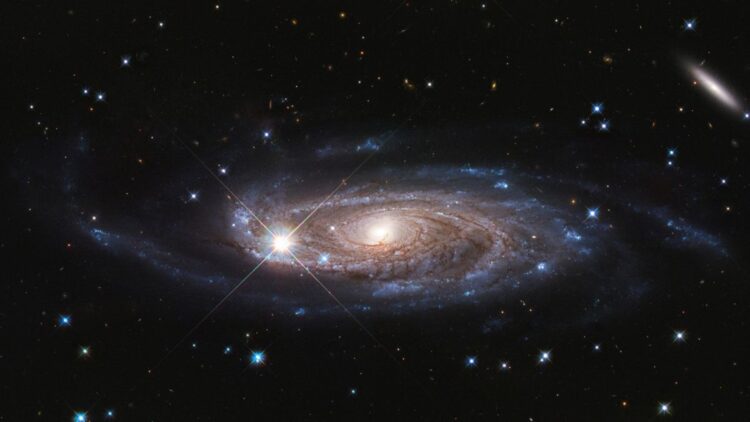Christmas is almost upon us, and NASA has unveiled a festive surprise from the cosmos. The James Webb Space Telescope (JWST) has recently captured a stunning image of a “Christmas galaxy” from the early universe, sparking excitement among astronomers. Named the “Firefly Sparkle” galaxy, this discovery offers a unique glimpse into the formation of galaxies like our own Milky Way, featuring star clusters that resemble Christmas lights twinkling in the vastness of space.
Firefly Sparkle galaxy: A glimpse into the past
The Firefly Sparkle galaxy, located over 13 billion light-years away, is a remarkable discovery that allows scientists to witness the universe just 600 million years after the Big Bang.
The image reveals ten distinct clusters of stars, glowing in vibrant colors reminiscent of festive ornaments, marking a turning point in understanding cosmic evolution.
“I find it amazing that humans have built a telescope that allows us to peer so far back in time and that we can see these very nascent phases of the galaxy in such a beautifully festive way,” remarked Professor Catherine Heymans, Scotland’s Astronomer Royal.
Dr. Lamiya Mowla of Wellesley College in Massachusetts and co-lead author of the study, highlighted the significance of this find, noting that it’s the first time that scientists have observed the early stages of galaxy formation with such clarity.
Unlike other galaxies—which are typically viewed in their fully formed state—the Firefly Sparkle galaxy is still in the process of assembling, providing invaluable data about the universe’s infancy.
The role of cosmic alignment
The JWST’s capabilities have enabled researchers to “weigh” this galaxy, revealing a mass comparable to our Milky Way during a similar developmental phase. This is surprising, as most galaxies from this epoch are much larger. The elongated shape of the Firefly Sparkle galaxy facilitated the identification of its ten distinct star clusters, each undergoing various stages of star formation.
Thanks to a rare cosmic alignment, the JWST could observe these distant star clusters in extraordinary detail. A cluster of galaxies positioned between the Firefly Sparkle and the telescope acted as a gravitational lens, bending and amplifying the light from this early galaxy.
Dr. Kartheik Iyer from Columbia University in New York noted, “It takes the light coming from the firefly and bends it and amplifies it so we can see it in glorious detail.”
This phenomenon has allowed scientists to study the processes shaping these nascent star systems.
A festive revelation from the cosmos
The vivid colors of the star clusters in this galaxy reflect the different stages of star formation. A galaxy’s early life is marked by intense activity, with new stars being born and gigantic stars dying, surrounded by gas and dust.
This dynamic environment contributes to the stunning hues visible in the galaxy’s image, providing insights into the age and compositions of each cluster.
The discovery of the Firefly Sparkle galaxy is both scientifically significant and a source of festive joy. Professor Heymans gushed about the beauty of being able to look so far back in time, observing the early moments of galaxy formation with such a “beautifully festive” glow. The galaxy’s star clusters, resembling fireflies in the summer night, evoke a sense of wonder and celebration.
As astronomers dive deeper into the cosmos, the Firefly Sparkle galaxy stands as a testament to the intricate processes that shape our universe. Its incredible discovery sheds light on our understanding of galactic formation and the universe’s origins, reminding us of the magic that lies beyond Earth. The cosmos continues to surprise and delight, making each new finding a reason to celebrate our place in the universe.

